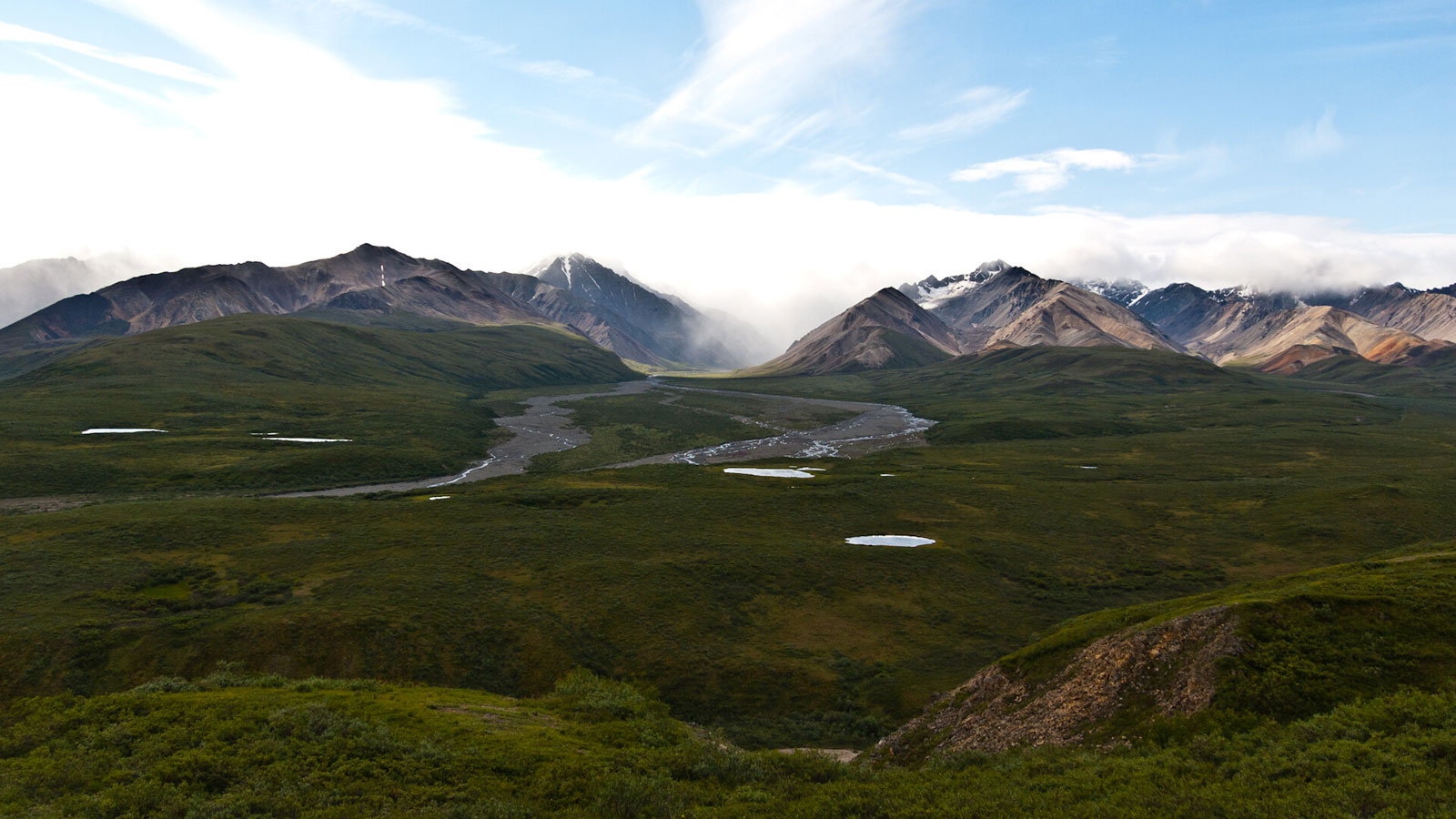Beneath the arctic tundra, a massive reservoir of carbon lies locked in frozen peat. Scientists are using remote sensing tools to keep an eye on that tundra from afar, monitoring it for changes that may provide insight about climate change.
Climate change is causing the Arctic to heat rapidly, warming its permafrost and releasing heat-trapping carbon dioxide and methane to the atmosphere.
“When the material thaws, it is a major concern,” said Peter Nelson, forest ecology director at the Schoodic Institute at Acadia National Park in Maine. Nelson is among the scientists studying the region via remote sensing.
Clues in the vegetation
Monitoring vegetation shifts in the Arctic can help scientists understand how the area is changing as the world warms. Already, researchers have documented expansion of boreal forests into the tundra. And at many sites in the region, the tundra is greening up, according to recent satellite observations.
NASA postdoctoral fellow Andy Maguire says these vegetation changes provide insights on key questions, such as learning about whether carbon may be escaping from the region’s frozen storehouse.
“Dramatic changes in plant community composition and productivity in permafrost-dominated landscapes, which often are linked to permafrost degradation and thaw, can indicate a transition of the Arctic from a net carbon sink to a net carbon source,” he wrote in an email.
But it is difficult to study vegetation changes in the vast, remote, lightly populated Arctic tundra, where research expeditions often are costly and resource intensive. Plants in the tundra can be tiny — some just a fraction of an inch high — and one small area can harbor significant biodiversity, further complicating study efforts.
To learn more about what’s happening in these remote regions, scientists are using a remote sensing technology called imaging spectroscopy to measure reflected light, chronicle changes in Arctic tundra vegetation, and bridge data gaps. Imaging spectroscopy collects data on reflected light, which it can measure in small color bands.
Spectrometers can collect data from towers, drones, aircraft, or even space satellites. In 2027-2028, when NASA expects to launch the Earth System Observatory, the satellite group is to include an imaging spectrometer. Researchers say the system will provide valuable data, as the new technology can collect far more bands of light than previously possible.
“This has many, many bands, so it can measure really nuanced color changes in the light that’s being reflected off the surface of the Earth,” Maguire said. “What we do as remote sensing scientists is we try to translate that reflected light to information about what types of plants are down there. How well are they functioning? Are they photosynthesizing efficiently? Are they stressed? Are they dormant?”
‘Ground truth’ still important in addressing challenges
Remote sensing can provide insight into vegetation in the vast Arctic, but it also comes with challenges. Light, ground cover, and the make-up of plant vegetation can make data difficult to interpret. In some plant communities in the arctic, the dominant species may be tiny — less than half an inch tall — requiring very fine-scale measurements. Interspersed with these diminutive mosses and lichens are much larger plants, making analysis difficult.
In addition, the arctic growing season is just a few months long, with continuous light during the summer months, making it difficult to keep track of rapidly occurring changes such as plant growth and flowering. Come winter, the region is plunged into months of darkness, further complicating light-related measurements.
When measuring light reflection, anything on the ground — like snow, ice, and pools of water — or in the air — like wildfire smoke, clouds, and humidity — can interfere with image collection and impair the reflective signature. Snow typically covers the ground in this region between eight and 11 months out of the year, further complicating data collection.
Remote sensing crucial … but still a need for sound ground measurements
These issues underscore that collecting data on the ground remains critical for accurately interpreting remotely collected data. Using backpack scanners, ground probes, and on-the-ground observation, researchers collect soil cores, measure ground saturation, and gas measurements to learn about what plants are doing, such as respiration and decomposition. Additionally, on-the-ground researchers chart vegetative cover, species prevalence, plant attributes, and an array of biogeochemical measurements. They also measure the reflective signatures of different plants and leaves and obtain chemical data about them.
“You need to have some ground measurements,” Nelson said. “While remote sensing is going to be useful, there’s going to be stuff that we won’t understand what’s in the data because we don’t have a reference measurement to point to.”
Using a combination of remote and on-the-ground data, researchers then can make observations about which types of plants are in a location, from mosses and tussock grasses to shrubs and other tundra species. This data is expected to provide new insights into how the plants are faring – and crucial clues about the future of the region.
Source link


